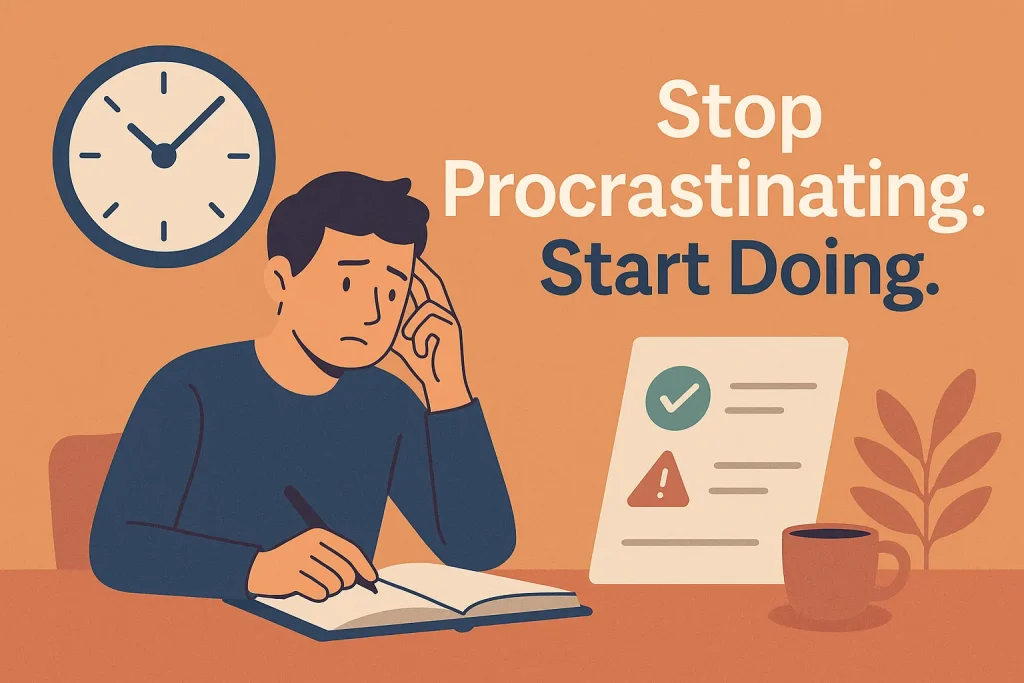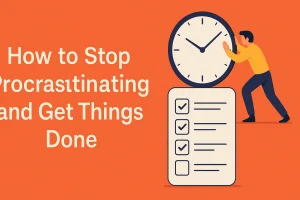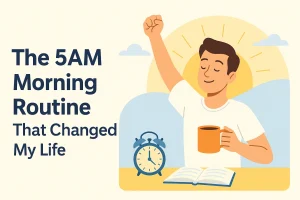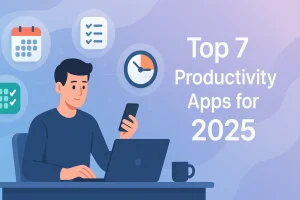How to Stop Procrastinating and Get Things Done

We’ve all been there—endless to-do lists, looming deadlines, and somehow… we end up watching cat videos or scrolling Instagram.
If you’re tired of feeling stuck and frustrated with yourself, it’s time to understand how to stop procrastinating—and finally take control of your time, energy, and focus.
This guide will walk you through the psychology behind procrastination and give you proven tools to break the cycle—for good.
Why Do We Procrastinate?
Procrastination isn’t laziness—it’s often fear in disguise. Fear of failure, fear of imperfection, or feeling overwhelmed by the task.
Other common reasons include:
- Lack of motivation or clarity
- Perfectionism (“It has to be perfect or not at all”)
- Decision fatigue
- Low energy or mental exhaustion
Recognizing the cause helps you choose the right solution.
How to Stop Procrastinating in 7 Practical Steps
1. Break the Task Into Tiny Steps
Overwhelm kills action. Break large tasks into the smallest possible first step.
Example: Instead of “Write report,” start with “Open Google Docs.”
2. Use the 5-Minute Rule
Tell yourself: “I’ll just do this for 5 minutes.”
Once you start, you often keep going. It tricks your brain past resistance.
3. Create a Distraction-Free Zone
Put your phone on airplane mode, block distracting websites, and clear your desk.
Tip: Use tools like Focusmate, Forest, or Freedom App.
4. Set a Timer (Pomodoro Technique)
Work for 25 minutes, then take a 5-minute break. Repeat.
This keeps your brain engaged without burning out.
5. Reward Yourself After Small Wins
Associate productivity with pleasure. Watch a video, have a snack, or stretch after completing tasks.
6. Focus on “Done” Not “Perfect”
Perfectionism is the ultimate procrastinator’s trap.
Done is better than perfect. Progress beats paralysis.
7. Forgive Yourself and Reset
Everyone procrastinates sometimes. Don’t beat yourself up. Just reset and take the next step.
Bonus Techniques That Work
- Habit stacking: Attach the task to an existing habit (e.g., journal right after coffee).
- Body doubling: Work near someone else doing tasks too.
- Use visual trackers: Mark your streaks or progress on a wall or app.
When Procrastination Becomes Chronic
If procrastination is affecting your job, relationships, or self-esteem long-term, consider talking to a therapist. Sometimes ADHD, anxiety, or depression play a role.
There’s no shame in needing deeper support.
Final Thoughts
Learning how to stop procrastinating isn’t about becoming a productivity machine—it’s about aligning your actions with your goals.
Every time you start before you feel ready, you grow stronger. Every task you finish builds trust with yourself.
✅ Try This:
Pick one task you’ve been avoiding. Break it into 3 steps. Do just the first one—right now.
Want Weekly Focus Tools?
Subscribe to our free newsletter for practical productivity tips, mindset resets, and real-life strategies to help you get things done—without burnout.




No comments yet. Be the first to comment!